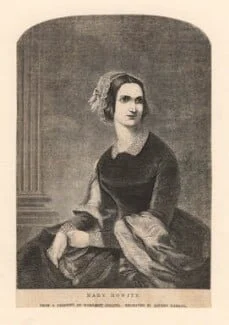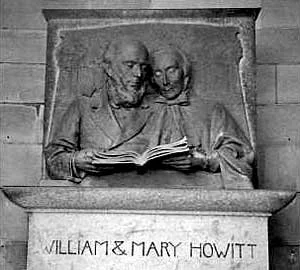Fredrika & Mary (new title coming soon…)
Ten or more years ago, before I got totally absorbed by my Aunt Norah’s diaries, I was immersed in the lives of two C19th writers: Swedish novelist Fredrika Bremer (1801-1865) and her English translator, the poet and writer Mary Howitt (1799-1888). Both women were travellers — Fredrika, most famously, to America in the mid-C19th, and later through Europe to Syria, Turkey and Greece; and Mary to Germany, Switzerland and Italy, where she and her husband William settled in the late 1870s.
Fredrika and Mary were also what we might call ‘seekers’, i.e. women who were actively looking to discover truths — spiritual and otherwise — with the intention of living richer and more meaningful lives (and enabling others to do the same). Mary Howitt especially made fascinating ‘faith journeys’, from the Society of Friends of her childhood and early married life, through Unitarianism and (in response to the death of her young son Claude) Spiritualism, finally converting to Roman Catholicism in her final decade.
While I have written about Fredrika Bremer and Mary Howitt in academic journals, their lives and their discussion of ‘big life questions’ deserve so much more attention. This project is about women, traveling, journeys (of all descriptions), writing, ageing etc; how women might live well and free, with and without faith or husbands or children…
Images
1: Fredrika Bremer, detail of an oil painting by J.O. Sodermark, 1843; in the Svenska Portrattarkivet, Stockholm, https://www.britannica.com/biography/Fredrika-Bremer
2: Mary Howitt (née Botham), by Alfred Harral, after Margaret Gillies. Wood-engraving, 1840s-1850s, 11 1/4 in. x 8 1/8 in. (287 mm x 207 mm) paper size. Given by Henry Witte Martin, 1861. NPG D4398. https://www.npg.org.uk/collections/search/portrait/mw38692/Mary-Howitt-ne-Botham
3. Sculpture of Fredrika Bremer, Humlegården, Stockholm, by Sigrid Fridman, 1927. The bronze statue depicts Fredrika Bremer in a forward movement, representing her role as a pioneer of women's rights. Photo: A. Twells, 2010.
4. William and Mary Howitt, Nottingham Castle, a bronze bas-relief on a granite plinth, by George Frampton, 1901. Photo from Rowena Edlin-White, article on the Howitts, in The Thoroton Society Newsletter, June 2013.



